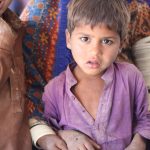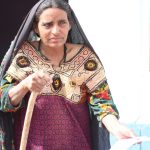The dire circumstances in Tharparkar District, paint a stark picture of significant systemic neglect. The relentless grip of malnutrition and disease has tragically claimed the lives of many children, aged between five months and nine years, pushing the toll to a heart-wrenching 449 just last year. Tharparkar is the largest district in Sindh with a distressingly low human development index rating. Access to fundamental necessities such as healthcare, hygiene, and nutrition remains alarmingly inadequate perpetuating a cycle of suffering that has long plagued the province.
Additionally, mental health is also severely compromised. A silent epidemic of rising suicide rates has also been sweeping across Tharparkar. Data from the Thar Institute of Psychiatry paints a grim picture, revealing approximately 300 suicides annually. Adolescents, constituting 80% of the victims aged between 15 and 25, find themselves stuck in a web of financial despair, lack of support systems, pervasive feelings of hunger, insurmountable debt, and shattered livelihoods. Poverty, resource scarcity, societal transformations, drug addiction, and depression also emerge as predominant factors.
Shifting focus to women’s health; early marriages, teenage pregnancies, and widespread malnutrition remain pervasive, exacerbated by the district’s rugged terrain and inadequate road infrastructure, which severely limit access to essential healthcare services. Tharparkar ranks abysmally low in national health indicators, with alarming rates of maternal and child mortality attributed to malnutrition and substandard healthcare. Shockingly, the Maternal Mortality Rate stands at 297 per 100,000 live births, while the Infant Mortality Rate registers at 87 per 1,000 live births.
In summary, Tharparkar District stands at a critical juncture in 2024, grappling with intertwined challenges that necessitate urgent, comprehensive interventions. Addressing these multifaceted issues demands a concerted effort, prioritizing the well-being and prospects of Tharparkar’s inhabitants.

















